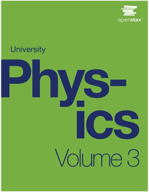?Photoelectric EffectIn the interpretation of the photoelectric effect, how is it known
Chapter 6, Problem 10(choose chapter or problem)
Photoelectric Effect
In the interpretation of the photoelectric effect, how is it known that an electron does not absorb more than one photon?
Unfortunately, we don't have that question answered yet. But you can get it answered in just 5 hours by Logging in or Becoming a subscriber.
Becoming a subscriber
Or look for another answer
